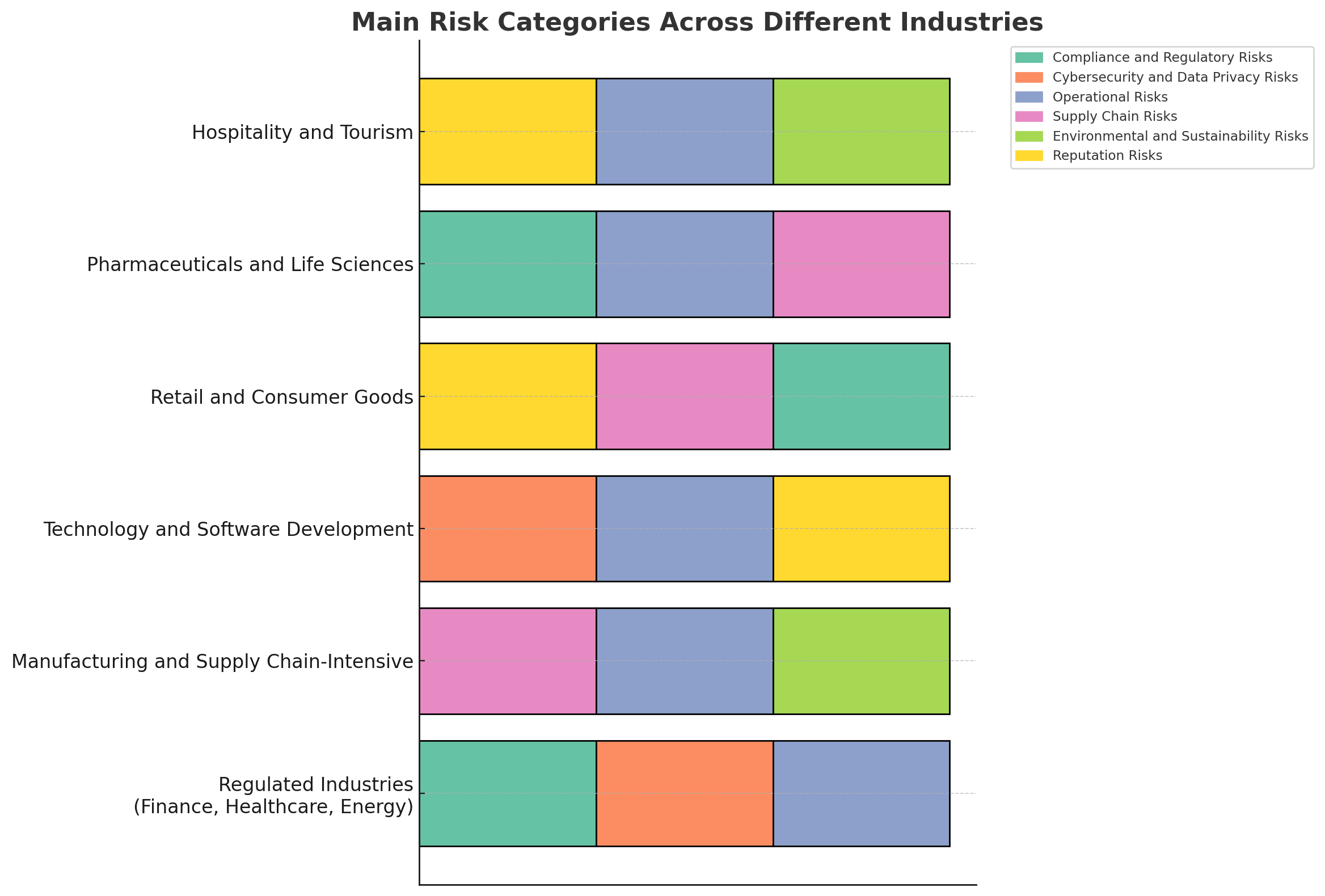In this article
- Understanding Enterprise Risk Categories
- Third Party Risk Management
- Vendor Risk Frameworks
- Strategic Risk
- Financial & Operational Risk
- Compliance & Legal Risk
- Sustainability & ESG Risk
- Cybersecurity & Information Risk
- Focus Areas in Vendor Risk Management
- Does your Industry influence your Vendor Risk Assessment?
- Should you consider Region as a Factor in your Vendor Risk Assessment?
- Improving Vendor Risk Assessment Criteria
- Vendor Risk in your Vendor Onboarding Process
- Integrating Vendor Risk Assessment with IQX Vendor-Portal
In this article
- Understanding Enterprise Risk Categories
- Third Party Risk Management
- Vendor Risk Frameworks
- Strategic Risk
- Financial & Operational Risk
- Compliance & Legal Risk
- Sustainability & ESG Risk
- Cybersecurity & Information Risk
- Focus Areas in Vendor Risk Management
- Does your Industry influence your Vendor Risk Assessment?
- Should you consider Region as a Factor in your Vendor Risk Assessment?
- Improving Vendor Risk Assessment Criteria
- Vendor Risk in your Vendor Onboarding Process
- Integrating Vendor Risk Assessment with IQX Vendor-Portal
As a supplier of IT solutions, completing vendor risk assessments is a regular occurrence. However, I’m often struck by the wide variability in onboarding processes, particularly in how vendor risk assessments are applied. Frequently, these assessments are reduced to a simple emailed questionnaire, with significant differences in the depth and breadth of the questions asked.
Even when the onboarding process involves an online Vendor Portal, the inconsistencies remain. In extreme cases, vendors may be asked to complete more than 20 separate self-assessment questionnaires, where the connection between the risks being assessed and the effort required is often unclear—creating unnecessary burdens for both the vendor and the buyer.
Another significant variation lies in the relationship between the risk and compliance processes and the decision to onboard a vendor. The decision to proceed with onboarding before the full vendor risk assessment is complete typically hinges on the risks identified upfront, and whether the identified risk is mandated for resolution. This decision also reflects how the organization manages risk and aligns approvals with its risk appetite and policies, usually formalized through a delegation of authority based approval to accept the assessed level of risk. In many instances, compliance checks and mitigation measures continue after the vendor has been onboarded.
We will explore what needs to be considered when establishing a robust vendor risk assessment process that effectively balances compliance needs with the requirements for commercially onboarding a vendor. This article focuses on vendor risk assessment categories.
Understanding Enterprise Risk Categories
Vendor risk assessment does not sit in an isolated silo, but rather supports the overall organizational risk management strategy. Prior to embarking on or refining your vendor risk assessment approach consider the overall risk framework and assessment categories your organization is using.
Organizations typically have a comprehensive risk management framework (often called Enterprise Risk Management or ERM) to identify, assess, manage, and monitor risks across various dimensions.
ISO 31000 – Risk Management is comprehensive and widely accepted risk management framework that provides principles, guidelines, and a process for managing risks, including those associated with vendors.
Enterprise Risk Assessment Categories
A common set of enterprise risk categories are:
- Strategic Risks are related to business direction, evolving competitive landscape (including disruptive technological change) and changes in consumer preferences.
- Operational Risks are associated with inadequate or failed internal processes and systems or unforeseen events like human error or external disasters/weather.
- Financial Risks involve uncertainties in financial markets, credit, liquidity, and investment decisions impacting the financial health of an organization.
- Compliance Risks relate to adherence to regulations, laws, and industry standards with associated penalties and reputational damage.
- Cybersecurity Risks are associated with information security, cyber-attacks, and sensitive data exposure along with the maintenance of business continuity. Cyber risk is the most important vendor risk to manage in the modern era.
Third Party Risk Management
Third-Party Risk Management (TPRM) is a crucial subset of this overall approach, focusing specifically on risks arising from engagements with external entities such as vendors/suppliers, contractors, and partners.
Vendor risk or supply chain risk management fall under this umbrella and clearly needs to be aligned to the overall ERM framework and with the organization’s overall risk appetite and strategic objectives by identifying potential risks from third-party relationships and incorporating them into the broader risk management strategy.
Vendor Risk Frameworks
There are a number of specific vendor and supply chain risk frameworks and other risk area frameworks that apply to assessing vendor risk. Examples include ISO 28000: Security Management System for the Supply Chain; NIST Cyber Supply Chain Risk Management (C-SCRM) and ISO 22301 – Business Continuity Management.
A vendor risk assessment framework might encompass the following categories:
The elevation of some risk categories to a main risk category should also be considered as certain categories have heightened risks associated with them in third party vendor relationships. Additionally, by elevating these risks into separate categories, their risk evaluation and acceptance prior to onboarding will be more visible and enforced.
Focus Areas in Vendor Risk Management
- Cybersecurity Risks are more prominent than ever before as more cybersecurity events are reported and many breaches are related to the IT supply chain and third party systems and providers.
- Reputational Risks is another area that has heightened risk with vendor relationships. Bribery and Corruption and Modern Slave labor are two risk subcategories that may need additional attention.
- Sustainability and ESG Risk have more prominence as there is an increasing global focus on sustainability, particularly around climate change and corporate social responsibility.
Does your Industry influence your Vendor Risk Assessment?
You should think carefully about your industry and your unique risk factors when developing your Vendor Risk Assessment framework and associated risk and sub-risk categories. It’s important to recognize that different industry types require a tailored approach to risk categories and their prominence within the framework. The industry you operate in shapes the specific risks that are most critical to manage.

For example, in a highly regulated industry like pharmaceuticals, the focus will be heavily on Regulatory Compliance and Product Safety Risks. The framework would prioritize evaluating vendors on their adherence to regulations such as Good Manufacturing Practices (GMP) and ensuring the safety and efficacy of products.
In contrast, for a brand-oriented manufacturing and distribution company, such as a luxury goods manufacturer, the emphasis might be on Reputation Risks and Ethical Sourcing. This company would prioritize assessing vendors on their ability to maintain high-quality standards and ethical practices, such as avoiding child labor or ensuring sustainable sourcing of materials.
The diagram focuses on the main risk categories across different industries. This highlights the core risk categories most relevant to each industry, making it easier to see how priorities differ across sectors.
Should you consider Region as a Factor in your Vendor Risk Assessment?
Understanding regional differences in risk focus is important for tailoring vendor risk assessments to align with local priorities, regulations, and heightened risks. By way of example, the boxes below summarize the key regional Focus Areas and associated risks for the USA, Europe, and Australia:
All the frameworks like ISO 31000, NIST Cybersecurity Framework, and others are designed to provide guidance rather than mandates. This means that they offer a set of principles, best practices, and processes that organizations can follow to manage risks effectively, but they do not impose strict, mandatory rules that must be adhered to.
So, in your quest for the perfect set of risk categories and subcategories and associated vendor risk assessments you will not be provided with a definitive answer. It is a process, and your categories and risk questionnaires will adapt to organizational needs and changing risk environment.
Improving Vendor Risk Assessment Criteria
- Flexibility: These frameworks are intentionally flexible to allow organizations to adapt the guidance to their specific context, such as their industry, size, and geographic location.
- Tailored Implementation: Organizations can implement the guidance in a way that aligns with their unique risk environment and business objectives, rather than following a one-size-fits-all approach.
- Continuous Improvement: The frameworks encourage continuous improvement by allowing organizations to evolve their risk management practices as new risks emerge and business conditions change.
Vendor Risk in your Vendor Onboarding Process
Imbedding your vendor risk process into your onboarding process in a systemized manner has many advantages such as:
- Early Risk Identification: Proactively mitigate risks before they impact operations.
- Improved Vendor Selection: Make informed choices by selecting vendors aligned with your risk tolerance and compliance needs.
- Enhanced Compliance: Ensure early regulatory adherence, reducing legal risks.
- Stronger Vendor Relationships: Establish trust with clear compliance and security expectations.
- Cost and Time Efficiency: Prevent costly issues by addressing risks during onboarding.
- Consistent Risk Management: Maintain uniformity with a standardized vendor risk assessment process.
- Continuous Improvement: Enable ongoing risk monitoring throughout the vendor lifecycle.
- Seamless Integration: Align risk management with other business processes for a holistic approach.
Integrating Vendor Risk Assessment with IQX Vendor-Portal
Understanding and implementing a comprehensive vendor risk assessment framework is essential for effective risk management and ensuring the successful onboarding of vendors. The variability in current assessment practices highlights the need for a more structured and unified approach. By adopting established frameworks like ISO 31000 and NIST Cyber Supply Chain Risk Management, and customizing them to fit your industry and regional requirements, you can create a robust risk assessment process.
The IQX Vendor Portal can streamline this process by offering configurable risk categories and self-assessment questionnaires, making it easier to manage and align your vendor risk assessments with your organizational needs. Integrating these assessments into your onboarding process allows you to proactively identify and address risks, select vendors that meet your compliance standards, and maintain consistency in your risk management practices.
As the risk environment continues to evolve, a well-defined vendor risk assessment process—tailored to your specific needs and supported by advanced tools—will enhance your ability to make informed decisions and safeguard your organization’s interests. Embrace a strategic approach to vendor risk assessment to better navigate the complexities of modern supply chains and ensure a resilient and compliant operational framework.
Related Posts
If you enjoyed reading this, then please explore our other articles below:




